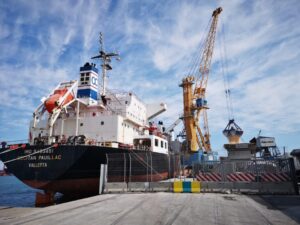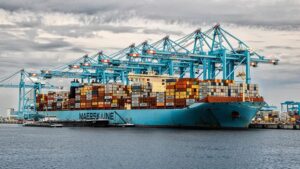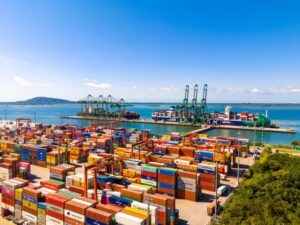Brasil Terminal Portuário (BTP) has gone live with CyberLogitec’s OPUS Terminal TOS platform after being successfully implemented in June 2021.
The OPUS Terminal system is expected to help the terminal achieve greater efficiency and convenience, punctuality in vessel entry and departure and productivity in annual throughput.
The system’s ‘Advanced Modules’ enhance the operational efficiency of the terminal’s yard and vessel operations while also decreasing unnecessary work and shortening the needed for planning time while increasing operation productivity.
The same version of OPUS Terminal’s Advanced Modules is being used at Westports terminal, the mega container terminal located in Malaysia, and many other CyberLogitec terminals.
BTP, a joint venture between APM Terminals and TIL (Terminal Investment Limited), is the largest terminal in South America and has a geographical advantage in providing shipping routes all over the world.
With the OPUS Terminal system implementation, BTP is expected to achieve the highly looked-for effect of enhancing the work efficiency and convenience, punctuality in vessel entry and departure, and higher productivity in annual throughput.
READ: Expanding Brazil’s promising container industry (£)
“We chose OPUS Terminal since the system is based on the best practices around the world and we believe that the system is advanced and stable enough to support us to provide efficient terminal operation and high-quality service,” said Marcio Guiot, Chief Operating Officer at BTP.
Due to the COVID-19 pandemic, the system was implemented remotely by the OPUS Terminal project team at CyberLogitec without a single visit to BTP Terminal.
Jeong Min Son, Head of Port Department, added “To achieve a successful remote implementation for the first time, we completed rigorous preliminary planning and preparations, and the establishment of new processes and development.
“To mitigate the risk of a remote implementation and customer uncertainty, testing was carried out repeatedly. The process and result have been open and transparent to the customer as part of customer communications. Consequentially, we’ve made the successful implementation and reduced the project stabilisation as well.”









